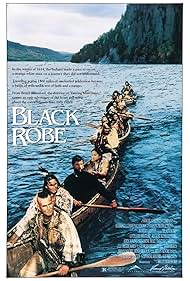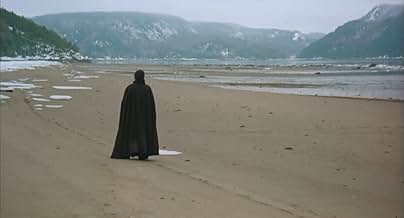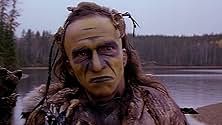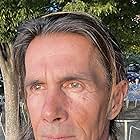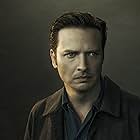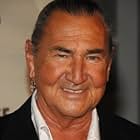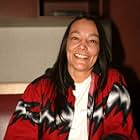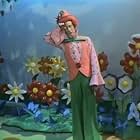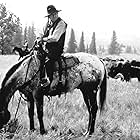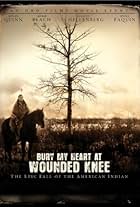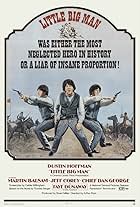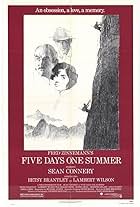In the 17th century, a Jesuit missionary nicknamed Black Robe by the natives and his small party of companions try reaching the Huron tribe in Canada all while facing mistrust, Iroquois warr... Read allIn the 17th century, a Jesuit missionary nicknamed Black Robe by the natives and his small party of companions try reaching the Huron tribe in Canada all while facing mistrust, Iroquois warring parties and harsh winter conditions.In the 17th century, a Jesuit missionary nicknamed Black Robe by the natives and his small party of companions try reaching the Huron tribe in Canada all while facing mistrust, Iroquois warring parties and harsh winter conditions.
- Awards
- 10 wins & 13 nominations
- Awondoie
- (as Harrison Liu)
- Kiotseaton
- (as Raoul Trujillo)
Storyline
Did you know
- TriviaThe ferocity of the torture scenes prompted accusations of racism from Native Americans. Prominent among the critics was Ward Churchill, who wrote an article that was heavily critical of the film. However, Brian Moore, who had done extensive research on the subject, had actually toned down the documented violence for both his book and his screenplay.
- GoofsIn one of the flashbacks to France, Father Laforgue's mother says she is praying to St. Joan. However, Joan of Arc was not canonized until 1920.
- Quotes
Daniel: They have an afterworld of their own.
Father Laforgue: They have no concept of one.
Daniel: Annuka told me they believe that in the forest at night the dead can see. The souls of men hunt the souls of animals.
Father Laforgue: Is that what she told you? It is childish, Daniel.
Daniel: Is it harder to believe in than Paradise where we all sit on clouds and look at God?
- ConnectionsEdited into Red Fever (2024)
I've viewed "Black Robe" three times now and it never fails to capture my attention from beginning to end (the film runs 101 minutes), which is why I don't get the criticism that it's somehow unabsorbing. What strikes me most is the raw realism. Viewing "Black Robe" is the next best thing to going back in time and viewing the events firsthand.
Other highlights include: Lothaire Bluteau's solid performance as the missionary priest; LaForgue's assistant, well played by Aden Young, and his developing love for the daughter of the Algonquin leader, played by the beautiful Sandrine Holt; the Algonquins themselves, particular the patriarch; the freaky midget shaman of a band of Montagnais natives; the harrowing events at an Iroquois fort; the subtext on the truth or falsity of spiritual beliefs, both of the Jesuits and the Indians; and the spectacular cinematography of the Quebec wilderness (mostly the Saint Lawrence River, filmed on location). The film successfully shows the desolate, untamed nature of the NE before the mass encroachment of Europeans.
Some may wonder: How does it compare to "Last of the Mohicans" or "Dances with Wolves," two contemporary films also featuring realistic portrayals of AmerIndians? Of the two, "Black Robe" is closer to "Last of the Mohicans" since the story takes place in the East and there aren't any cowboys & Indians, although the story takes place well over a century earlier. The film differs from both in that there aren't really any Hollywood contrivances, including conventional movie plotting. As great and generally believable as those other films are, "Black Robe" shows the harsher, bleaker reality, which some may translate as boring.
However, as raw and realistic as "Black Robe" is, it could've been more so, considering that it fails to show one disturbing reality of Eastern AmerIndian culture, as detailed in Moore's book (pointed out by another reviewer): The film avoids depicting the native practice of ritual cannibalism on a dead infant, a custom that was common among the tribes of the Eastern woodlands. To consume an enemy's flesh was to absorb his power. The heart of an especially courageous foe (such as Jesuit martyr St. Jean Brebeuf) would be eaten by tribal leaders. But, don't get me wrong here, I'm kind of glad the movie left this aspect out.
"Black Robe" has the same vibe as 2007's "Mongol: The Rise of Genghis Khan," so if you appreciate that style of raw-realism you'll likely value "Black Robe." Needless to say, if you have ADHD or require constant explosions to maintain your attention, stay far away.
GRADE: A
- How long is Black Robe?Powered by Alexa
Details
- Release date
- Countries of origin
- Languages
- Also known as
- Kara Cübbe
- Filming locations
- Production companies
- See more company credits at IMDbPro
Box office
- Budget
- A$11,000,000 (estimated)
- Gross US & Canada
- $8,211,952
- Gross worldwide
- $8,212,122
- Runtime1 hour 41 minutes
- Color
- Aspect ratio
- 1.85 : 1
Contribute to this page

